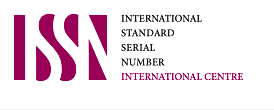ART ACTIVITIES AS A MEDIUM FOR CRITICAL THINKING IN THE "LET'S SHARE THE ART" PROGRAM
Abstract
Keywords
Full Text:
PDFReferences
American Philosophical Association. (1990). Critical Thinking: A Statement of Expert Consensus for Purposes of Educational Assessment and Instruction. ERIC document ED 315-423.
Andayani, D. (2017, July 17). Komnas PA hope parents instill an attitude of tolerance in children. Seconds News. https://news.detik.com/berita/d-3562968/komnas-pa-harap-orang-tua-tanamkan-sikap-toleransi-pada-anak
National Counterterrorism Agency (2017). General Explanation of the Guidelines for the Deradicalization Program for Rehabilitation Phases for Terrorism Inmates within prisons. Sentul, Indonesia: Indonesia Government.
Bessi, A., Zollo, F., Del Vicario, M., Scala, A., Caldarelli, G., & Quattrociocchi, W. (2015). Trend of narratives in the age of misinformation. Plos One, Advanced onnline publication. doi: 10.1371/journal.pone.0134641
Bower, G.H., & Forgas, J. P. (2000). Affect, memory, and social cognition. In E. Eich, J. F. Kihlstrom, G. H. Bower, J. P. Forgas, P. M. Niedenthal (Eds.), Cognition and Emotion (pp. 87-168). New York: Oxford University Press.
Cacioppo, J. T., & Petty, R. E. (1982). The need for cognition. Journal of Personality and Social Psychology, 42(1), 116.
Chirumbolo, A., Brizi, A., Mastandrea, S., & Mannetti, L. (2014). 'Beauty Is No Quality in Things Themselves': Epistemic Motivation Affects Implicit Preferences for Art. PLoS one, 9(10), e110323.
De Cruz, H. (2010). Toward an Integrative Approach of Cognitive Neuroscientific and Evolutionary Psychological Studies of Art. Evolutionary Psychology, 8(4), 695-719.
Facione, P. A. (2000). The Disposition Toward Critical Thinking: Its Character, Measurement, and Relationship to Critical Thinking Skill. Informal Logic, 20(1), 61-84.
Facione, P.A. (2015). Critical Thinking: What It Is and Why It Counts. Insight Assessment.
Facione, N. & Facione, P.A. (1997). Critical Thinking Assessment in Nursing Education Programs: An Aggregate Data Analysis. Millbrae, CA: The California Academic Press.
Facione, N., Facione, P.A., & Giancarlo (Sanchez), C. (1994) Critical Thinking Disposition as A Measure of Competent Clinical Judgment: The Development of the California Critical Thinking Disposition Inventory. Journal of Nursing Education, 33, (8), 345-350.
Fraser, M.W., Richman, J.M., Galinsky, M.J. & Day, S. H. Intervention Research: Developing Social Programs. New York: Oxford.
Fu, J. H., Morris, M. W., Lee, S., Chao, M., Chiu, C., Hong, Y. (2007). Epistemic Motives and Cultural Conformity: Need for Closure, Culture, and Context As Determinants of Conflict Judgments. Journal of Personality and Social Psychology, 92(2), 191-207. doi: 10.1037/0022-3514.92.2.191
Guess, A., Nagler, J., & Tucker, J. (2019). Less than You Think: Prevalence and Predictors of Fake News Dissemination on Facebook. http://advances.sciencemag.org/content/5/1/eaau4586 DOI: 10.1126/sciadv.aau4586
Holland, J. L. (1985). Making Vocational Choices: A Theory of Vocational Personalities and Work Environments. Englewood Cliffs, NJ: Prentice Hall.
Jakesch, M. & Leder, H. (2009). Finding Meaning in Art: Preferred Levels of Ambiguity in Art Appreciation. The Quarterly Journal of Experimental Psychology, 62(11), 2105–2112. doi: 10.1080/17470210903038974
Jung, J. M., & Kellaris, J. J. (2004). Cross-National Differences in Proneness to Scarcity Effects: The Moderating Roles of Familiarity, Uncertainty Avoidance, and Need for Cognitive Closure. Psychology & Marketing, 21(9), 739–753. doi: 10.1002/mar.20027
Januszewski, A. & Koetting, J.R. (1998). Debunking the Conspiracy Theory: Understanding Ideology in Explanations in Historical Studies of Educational Technology. Techt Trends, 43(1), 33-36.
Kruglanski, A. W. (1989). Lay Epistemics and Human Knowledge: Cognitive and Motivational Bias. New York: Springer Science+Bussiness Media LLC.
Kruglanski, A. W. (2004). The Psychology of Closed Mindedness. Hove: Psychology Press.
Leder, H., Carbon, C. C., & Ripsas, A. (2006). Entitling Arts: Influence of Title Information on Understanding and Appreciation of Paintings. Acta Psychologica, 121, 176–198.
Nisbet, E. C., Hart, P. S., Myers, T., & Ellithorpe, M. (2013). Attitude change in competitive framing environments? Open-/closed-mindedness, framing effects, and climate change. Journal of Communication, 63(4), 766-785. doi: 10.1111/jcom.12040
Ostrofsky, J., & Shobe, E. (2015). The Relationship Between Need for Cognitive Closure and the Appreciation, Understanding, and Viewing Times of Realistic and Nonrealistic Figurative Paintings. Empirical Studies of the Arts, 33(1), 106-113.
Petty, R. E., Brinol, P., Loersch, C., & McCaslin, M. J. (2009). The need for cognition, in M. R. Leary & R. H. Hoyle (Eds.). Handbook of individual differences in social behavior (pp. 318-329). New York: Guilford Press.
Philippot, P., Neumann, A., Vrielynck, N. (2008). Emotion Information Processing and Affect Regulation: Specificity Matters! in M. Vandekerckhove, C. von Schefe, S. Ismer, S. Jung & S. Kronast (Eds.), Regulating Emotions: Culture Social Necessity, and Bilogical Inheritance (p. 189-209). Victoria: Blackwell Publishing.
Spiro, R. J., Feltovich, P. J., Jacobson, M. J., & Coulson, R. L. (2012). Cognitive flexibility, constructivism, and hypertext: Random access instruction for advanced knowledge acquisition in ill-structured domains. In L. P. Steffe & J. Gale (Eds.), Constructivism in education (pp. 103–126). Hillsdale, NJ: Lawrence Erlbaum.
Tolerance of Indonesian students affected by the Jakarta regional elections? (2017, May 3). BBC News Indonesia. https://www.bbc.com/indonesia/indonesia-39779463
Wagner, E. F., Swenson, C. C., & Henggeler, S. W. (2000). Practical and Methodological Challenges in Validating Community-Based Interventions. Children's Services, 3(4), 211-231.
Webster, D. M., & Kruglanski, A. W. (1994). Individual Differences in Need for Cognitive Closure. Personality and Social Psychology, 67(6),1049-1062.
Willig, C. (2008). Introducing Qualitative Research in Psychology. Berkshire: Open University Press, McGraw-Hill
Zeki, S., & Marini, L. (1998). Three cortical stages of colour processing in the human brain. Brain: a journal of neurology, 121(9), 1669-1685
Zollo, F., Novak, P. K., Del Vicario, M., Bessi, A, Mozetic, I., Scala, A., Caldarelli, G., & Quattrociocchi, W. (2015). Emotional Dynamics in the Age of Misinformation. Plos One, Advanced onnline publication. doi: 10.1371/journal.pone.0138740
DOI: http://dx.doi.org/10.22441/biopsikososial.v6i2.17286
Refbacks
- There are currently no refbacks.
Copyright (c) 2022 Biopsikososial: Jurnal Ilmiah Psikologi Fakultas Psikologi Universitas Mercubuana Jakarta
JBUMBand its articles is licensed under a Creative Commons Attribution-ShareAlike 4.0 International License.
Tim Editorial Office
JBUMB
Fakultas Psikologi, Universitas Mercu Buana
Jalan Meruya Selatan No. 1, Kembangan, Jakarta Barat, 11650, Indonesia
Phone: +6281318855243
Email: [email protected]
Website: https://publikasi.mercubuana.ac.id/index.php/biopsikososial/index

















